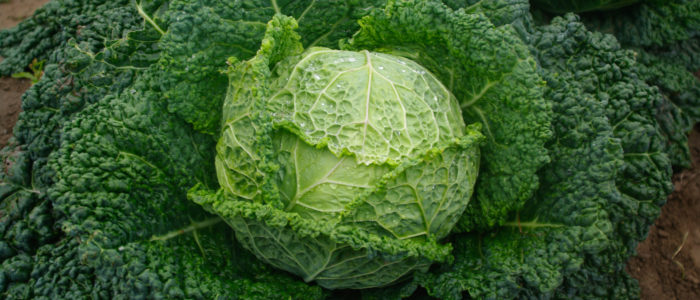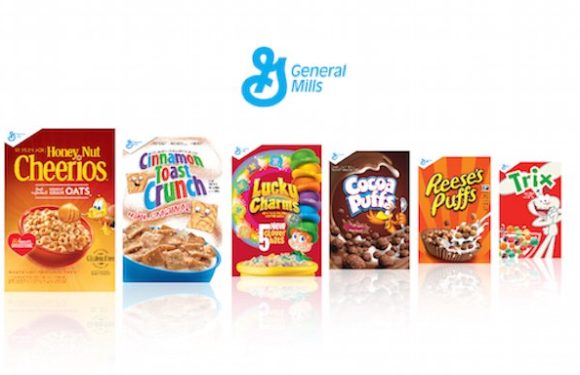April 22, 2017
UMass Amherst
Stockbridge School of Agriculture
Online Student Donna Turner Woods Interviews Darryl Benjamin on “Nanotechnology in Agriculture and Food” for her final paper in Professor Renee Ciulla’s Global Food Systems class.
DTW: Since we know what Nanotechnology is and how it was originally being used for replication of matter, should there be concern if it used in agriculture – crops and livestock, and human and animal consumption that replication of cells will take place? Meaning once ingested, the replication process might latch onto the human and animal cells. What would the consequences be?
DB: Nanotechnology is a giant leap forward in the manufacturing, energy, electronics, and computing fields, but I’m not so sure I want it in my food. Engineering food is a tricky business because there are always unintended consequences. Scientists tend to focus on a narrow spectrum of study that verifies preconceived outcomes. But it took millions of years to evolve the human body, so I question the safety of nanofoods, which has only been around for half a dozen years.
The tiny size of nanomaterials permits them to pass more easily through cell membranes and other biological barriers, allowing these particles to be easily taken up into organisms and cause cellular dysfunction. Potential risks to humans include DNA damage leading to cancer, brain, and heart illnesses. Scientists need to look at the whole picture and conduct decades of testing before the biological interdependencies and complexities of living systems can be sufficiently evaluated as safe enough to put nanoparticles in our food.
DTW: We know about GMOs/GEOs which are gene and DNA altering seed and its effects on crops – the plants themselves, crop yields, and the environment – soil and water absorption (Leopold Study 2013) but what we do not know is the long-term effects they have on human and animal consumption. Is there any data on Nano consumption? If there is are there safety parameters in place for human and animal consumption of Nanos? Meaning, the amount one can consume before it becomes harmful? If so, how is it measured?
DB: You bring up an important point. Just as GMOs quietly entered the food supply, so too did nanoparticles in food. Unfortunately, no nanotechnology-specific regulation or safety testing is required before manufactured nanomaterials can be used in food, food packaging, or agricultural products. Unlike GMOs where there are conflicting studies, there are almost no data on nanoparticles in food. We know nanoparticles can be more chemically reactive and more bioactive than larger particles of the same chemicals, and that greater bioactivity may introduce new toxicity risks, but where are the studies?
We should be concerned not just about consumption, but workers who may encounter nanomaterials during production, packaging, transport, distribution, and waste disposal of food and agrochemicals. Studies have shown that nanomaterials can enter the bloodstream via the lungs simply by inhaling — raising major occupational health and safety concerns.
The lack of standards and internationally recognized measurement methods, coupled with the shrouding of the nanotechnology industry and bolstered by lack of regulation has created significant challenges to simply understanding where nanomaterials are being used and the reality of their interactions with the public and our environment.
Transparency would require all relevant data related to safety assessments, and the methodologies used to obtain them, to be placed in the public domain. Manufacturers should work with regulators to ensure that their products have undergone appropriate safety testing, and provide the relevant data regarding the health and environmental safety of their product.
Regulation should require the guiding principle of “No data, no market” to verify the safety of engineered food instead of “Release into the food supply first, assess risks later.”
DTW: What are the benefits of nanotechnology when used in all areas of agriculture?
DB: There are many, and more are being developed almost every day. A Cornell University team headed by textile scientist Margaret Frey developed a cloth farmers can use to reduce the amount of crop agrichemicals. Planted along with seeds, the cloth’s saturated nano fibers slowly release pesticides and herbicides so that additional spraying of crops becomes unnecessary. The targeted release also eliminates chemical leaching into the water supply to benefit both consumers and the environment.
Another pro is chicken feed to remove campylobacter — feed enriched by nano carbohydrate particles binds with the bacterium’s surface to remove it through the bird’s feces. When used in chickens, it might reduce the one million annual outbreaks of campylobacteriosis in America.
There are countless other applications being developed, including nanocapsules for delivery of pesticides, fertilizers, and other agrichemicals more efficiently, nanosensors for monitoring soil conditions and crop growth and for detection of animal and plant pathogens; and — according to developers — targeted genetic engineering to deliver trait-enhancing DNA to plants.
DTW: Is Nanotechnology being used in the development of a “new seed” replacing GMOs/GEOs?
DB: Novel genes are being incorporated into seeds and sold in the market. Research on “smart seeds” programmed to germinate under favorable conditions with nanopolymer coating (encapsulation) is underway. Tracking of sold seeds could be done with the help of nanobarcodes that allow electronic tracking.
Seeds are also using nanocoatings to prevent disease spread and seed death by pathogens while in storage. Nanocoating of seeds using nanoparticles (1 billionth of a meter, or 25,250,000th of an inch) of Zinc, Manganese, Protactinium, Platinum, Gold, Silver are said to be used in far less quantities than used today. A technique known as quantum dots (QDs) is a fluorescence marker coupled with immuno-magnetic separation for E coli 0157:H7, which will be useful to separate unviable and infected seeds.
DTW: If so, what are the environmental consequences of using Nano-seed in agriculture? Water usage and absorption? Soil integrity? and Waste?
DB: All of these excellent questions are unanswered because of lack of balanced, unbiased, long-term research. There is, however, an abundance of enthusiasm and publicity around studies that promote the new technology.
One example reported in Science News says, “With potential adverse health and environmental effects often in the news about nanotechnology, scientists are reporting that carbon nanotubes could have beneficial effects in agriculture. Their study found that tomato seeds exposed to CNTs germinated faster and grew into larger, heavier seedlings than other seeds. That growth-enhancing effect could be a boon for biomass production for plant-based biofuels and other agricultural products, they suggest.”
It appears that in our enthusiasm to embrace new, profitable research we discard common sense, which would dictate testing on organisms for at least a generation. Instead, it appears that these products are ushered into the marketplace without scrutiny as a fait accompli.
DTW: We also know that Monsanto had recently gotten a federal law passed, what is known as, The Dark Act which states that GMOs/GEOs are not required to be listed on the labels of food products; and has stripped the States of their power in controlling the farming of and labeling of GMOs/GEOs. Since Monsanto is still not aware, or should we say the public is not aware, of the long-term ramifications from consumption of the food products – The Dark Act also includes a cap on damages should the public sue for the side effects from the consumption of GMOs/GEOs.
Would the Dark Act (Denying Americans the Right to Know) (DARK) Act include Nanotechnology or is it GMO/GEO specific?
DB: At this time, nanofood is flying below the radar and is not included in The Dark Act. In effect, it means manufacturers have a blank check to use nanotech at will in agriculture and in food. There are FDA guidelines, but they are toothless. Fortunately, there are organizations such as the Center for Food Safety who seek to establish a precautionary policy both at home and abroad to “safeguard human health and the natural environment.” They urge regulations that ensure transparent oversight and communication in nanotechnologies’ effects and social impacts.
DTW: Now that Bayer is in the last stages of acquiring/owning Monsanto Ag Business have you heard anything about their research heading into the direction of nanotechnology? I ask because Monsanto had shied away from nanotechnology staying with GMOs/GEOs only.
DB: When Robert Shapiro (then CEO of Monsanto) was asked what he believed was the world’s most promising future technologies, he replied, “There are three, although I have a feeling that under some future unified theory they will turn out to be just one. The first is, of course, information technology …the second is biotechnology …and the third is nanotechnology.”
However, because many of the same criticisms of GMOs apply to nanofood, I believe Monsanto is indeed gun-shy about nanotech. That doesn’t mean they’re giving up on new bio-engineered foods. Far from it. Monsanto is putting its money on an even newer technology called CRISPR, or gene editing, which is reportedly more precise than GMOs. On September 22, 2016, Monsanto announced they had obtained the exclusive license to the CRISPR-Cas genome-editing technology from the Broad Institute at Harvard University and MIT. Like Nanofood and GMOs, CRISPR is being embraced without oversight.
DTW: Do you see the Nanotechnology industry being transparent so that public trust will be established?
DB: I believe I have previously answered that question.
DTW: Will the consumer learn what products have Nanotechnology use, i.e., the product packaging that used nanotechnology wrappings, etc.?
DB: Only if legislation forces them to label, which, as was previously addressed, is not likely to happen in the foreseeable future.
DTW: There is support for the use of nanotechnology in the food wrappers to detect/prevent spoilage for longer shelf life; but, what are other benefits from nanotechnology when used in foods?
DB: Other purported benefits for Nanofoods include the immediate detection of E. coli bacteria in a food sample; if Salmonella bacteria are present, for example, the nano-sized dye particles become visible. There is no need to send out to the lab and wait days for culturing results; improved solubility of vitamins, antioxidants, healthy omega oil fractions and other nutrients; nano-nutrient particles are fully soluble and invisible in water and oil, widening the door for potential nutraceutical beverages; nanobarcodes from nanoparticles that contain silver and gold stripes varying in width, length, and amount, create billions of combinations to tag individual products; barcodes have been primarily used to assure brand and authenticity in pharmaceuticals — applications are forthcoming that trace food batches; food technologists say food spreadability and stability improve as a result of incorporating multiple nano-emulsions — for example, a low-fat mayonnaise formulation provides a satisfying fatty mouth feel — extra stabilizers and thickeners aren’t needed to achieve the desirable texture. The nano-emulsion could have its application in formulating other low-fat products; and novel flavors such as cold and creamy based on a rethinking of how taste buds perceive flavor — researchers identified which individual cells on a given taste bud perceive a flavor. Each cell would recognize just one of the five main flavors — bitter, salty, sweet, sour and umami. One company has developed a library of flavors, including compounds called bitter blockers. These specialized molecules trick the tongue into not tasting the bitterness in foods such as cocoa or soy.
Resources:
http://www.nanowerk.com/spotlight/spotid=37064.php
http://14.139.155.167/test5/index.php/kjas/article/viewFile/7890/8148
http://www.centerforfoodsafety.org/issues/682/nanotechnology/about-nanotechnology#
https://www.newscientist.com/article/2106946-monsanto-cuts-deal-to-use-crispr-to-engineer-food/






















